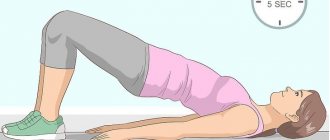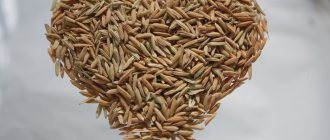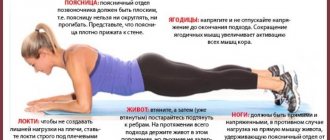You can breastfeed a few hours after surgery
Now the approach to the management of women after cesarean section has changed. The main focus was the prevention of deep vein thrombosis of the legs due to inactivity and the prevention of adhesions. Therefore, if a woman feels well, she is allowed and even recommended to get out of bed literally a few hours after the operation.
Of course, during this period she may still have a catheter in her bladder, in such cases the help of a nurse is needed. And you can walk around the ward within 24 hours. To prevent blood clots, wearing compression stockings is also important.
Anatomical basis of pathology, its causes
Treatment of diastasis in women and men is one of the problems of modern abdominal surgery.
The anterior wall of the abdomen consists of separate anatomical structures - among them the rectus abdominis muscles. These are two muscle strands extending from top to bottom. Each muscle is surrounded by an aponeurosis - a dense connective tissue “case”. The individual fibers of adjacent aponeuroses are densely intertwined with each other, forming the linea alba - a cord that runs along the midline of the body.
Individual fibers of the white line of the abdomen can weaken, stretch and diverge. This discrepancy is called diastasis of the rectus abdominis muscles. The abdominal press with diastasis is weakened. Women suffer more often than men - diastasis of the rectus abdominis muscles is often detected during pregnancy or after a cesarean section (especially a repeat one).
Reasons for the formation of pathology during pregnancy:
- the uterus with the growing fetus presses on the anterior abdominal wall, stretching it;
- During pregnancy, hormones affect the connective tissue - it becomes more “fluffy” and pliable, this process affects the connective tissue that makes up the aponeurosis of the rectus abdominis muscles. Therefore, the problem of how to get rid of diastasis of the rectus abdominis muscles after childbirth remains relevant.
During a cesarean section, the integrity of the aponeurosis is disrupted - it becomes more pliable.
The universal causes of diastasis in men and women are:
- obesity;
- rapid weight loss (for example, when following a strict diet);
- severe hacking cough in chronic nosologies of the respiratory system;
- increased physical activity (especially heavy lifting);
- regular constipation;
- dysplasia (improper development) of connective tissue.
You can shower the next day
Until the scar has healed, which is approximately 4-6 weeks, it is not recommended to take a bath, go to the sauna, bathhouse, public swimming pools or jacuzzi.
Long-term postoperative dressings on the area of the postoperative wound are not recommended. On the contrary, after a day the bandage is removed, the condition of the scar is checked, and the woman can take a shower.
Soap and water may run down the skin of the abdomen, but you should not wash with a washcloth for 4-5 days. And in the future, it is important not to injure the scar area with a washcloth or sponge. After showering, the scar area should be dried with a towel. In general, it is important to keep the postoperative wound clean and dry.
There are no diets after cesarean
You can drink immediately after surgery, because there was blood loss, which means dehydration. After removal of the catheter, fluid intake is not limited, although recording the daily urine volume is still recommended.
You can eat a few hours after a cesarean section, but it’s better not to rush with solid food and wait at least a day. However, there are no diets after cesarean section at all.
Evidence-based medicine has refuted myths about the harmfulness or usefulness of certain products after childbirth, cesarean section and during breastfeeding. Different peoples of the world have their own cuisines and dietary preferences, but after the birth of a child, a woman needs to quickly gain strength and energy, which is important for the development of lactation. To prevent constipation and difficulty with bowel movements, doctors recommend eating foods with a lot of fiber.
How to get your abs back without exercise after a caesarean section
You can quickly restore your shape and abs only if the postoperative period proceeds favorably and there are no complications. Therefore, one should strive to maintain such a state above all. To speed up the process, you should:
- wear a bandage after surgery, and also use it before giving birth;
- eat nutritiously, but with dietary restrictions;
- breastfeed (improves metabolism);
- avoid hypothermia and contact with infectious patients;
- sleep fully if possible;
- if severe stress reactions develop, take sedatives, taking into account restrictions on medications during lactation;
- walk in the fresh air at least 3-4 times a week for forty minutes;
- follow the rules for starting training after childbirth.
Nutrition
The diet should:
- avoid fatty, fried, sweet, smoked foods;
- consume 400-500 g of fiber per day in vegetables and fruits;
- do not drink strong tea and coffee;
- drink at least 2 liters of liquid per day;
- Taking into account lactation, give preference to warm fruit drinks and compotes;
- do not eat butter and flour;
- prefer lean varieties of meat and fish;
- season food with vegetable oils, replenishing reserves of unsaturated fatty fats;
- do not practice fasting days;
- include greens in salads;
- prefer seasonal vegetables and fruits;
- limit animal fats (margarine, palm oil);
- limit foods that cause flatulence (legumes, fresh bread, whole milk, some vegetables);
- the share of protein products should be at least 25%;
- cook soups with low-fat broth;
- reduce the amount of salt when edema develops;
- After training, eat protein foods, and before them – carbohydrate foods;
- increase the amount of cereals, cook them in water and half with milk.
Example of a diet after a cesarean section
This will speed up metabolic processes and allow you to exercise more actively. Nutrition plays a big role in training. You should not consume fat-burning foods or sports supplements while breastfeeding. It is beneficial to take multivitamin supplements for nursing mothers.
After childbirth, it is necessary to monitor the blood condition for the development of anemia: often this condition occurs unnoticed by the woman, worsening her well-being and reducing her adherence to physical activity. For this disease, long-term courses of iron supplements are prescribed.
Wraps
To reduce your waist, you can apply wraps to the scar area, as well as take baths. Such procedures are optimally carried out 4-5 months after surgery, so as not to harm skin regeneration and restoration of the uterus. Honey, seaweed, and vegetable oils can be used as wrapping products. Sea salt should be avoided.
After cesarean section any movement is allowed
The organs of the reproductive system return to normal 6-8 weeks after a cesarean section, so physical education can be resumed no earlier than this time. Moreover, in the first weeks the woman will already adapt to caring for the child, move more, rest less, so additional physical training will not be needed.
The postoperative scar takes six months to form, so you may experience pain during physical activity in the abdominal area. In such cases, the press can begin to be pumped only 3-4 months after the operation or even later. There are no clear recommendations and most often this is a woman’s personal choice based on her well-being.
It is important not to chase records. If pain occurs, the load should be reduced. If the pain does not subside over a period of time, this is a reason to consult a doctor.
After a cesarean section, any movement is allowed, including bending and squatting, but it is important to understand that in some positions a woman may experience more pain. Such body positions should be avoided or limited.
How to start training your abs after a cesarean section
You need to start pumping up your abs after a cesarean section by following simple rules:
- increase intensity by 5-10% per week;
- choose static abdominal approaches as your first exercises;
- warm up the body before training with light aerobic exercise;
- avoid pain during exercise, and if it occurs, stop training;
- exercise after breastfeeding;
- do not train if you are overworked or ill;
- exercise regularly;
- do not use the child in training;
- strictly adhere to the deadlines;
- do not use burning or warming creams during training;
- take rest days in training;
- use breathing exercises.
Regarding the training itself, the following is recommended:
- start with light loads;
- pause between sets for 1-3 minutes;
- at the end it is better to do light muscle stretching;
- train 1.5 hours after eating;
- when thirst appears, drink water in small sips;
- coordinate exercises with breathing: load as you exhale, relaxation as you inhale;
- monitor heart rate (heart rate) and blood pressure (blood pressure) during exercise;
- combine abdominal exercises with other light activities.
Playing sports should bring mild fatigue and satisfaction. You should not overload yourself in an effort to get back into shape as quickly as possible.
We recommend reading the article on how to remove belly fat after a caesarean section. From it you will learn about the causes of a large belly after surgery, what it can look like depending on the period after the CS, how long it takes to recover, how to remove the belly at home, and also with the help of surgery. And here is more information about how to lose weight after a cesarean section.
When to stop
If the following signs appear, you should stop training altogether:
- dizziness;
- headache;
- flickering of flies before the eyes;
- sharp pain in the abdomen;
- the appearance of bloody discharge from the genital tract;
- heartbeat;
- rhythm disturbance.
If, during exercise, nagging pain in the lower abdomen appears, and it does not lose its intensity for 7-10 days, then it is better to stop training until you feel better.
Each session should cause moderate stress: heart rate should increase by 10-15% at the beginning of training. After 7-8 months you can train in a more intensive mode. You can also alternate aerobic exercise in the form of an intense walk and exercise: do a set of abdominal exercises after a daily walk with your child in the park and finish it all with stretching, after which you can take a walk again in the evening.
It is better to lift a child by squatting
There are no clear recommendations regarding heavy lifting, but in general it is not advisable to lift anything weighing 5-7 kg for the first 6 weeks after surgery. This usually coincides with the weight of the child being cared for. After 6 weeks, you can gradually increase weight loads.
There is a technique called safe lifting. The legs have more muscles, so the load on the legs is safer than on the spine or the front wall of the abdomen. That is, it is easier to lift a child not through bending, but through squatting.
Torso rotations must begin with changing the position of the legs - this reduces the load on the spine. When a woman is sitting and holding a child in her arms, the correct thing to do is not to get up with the child, but to first put the child next to her, stand up, and then lift the child. It is also important to keep the child or any weights close to the body.
When is the second caesarean section performed?
Today, vaginal (natural) births with a uterine scar are being performed more and more often. Expectant mothers are well informed about the advisability of such births and insist on them, and the equipment of most maternity hospitals allows women to give birth through the vaginal canal after a previous cesarean section.
Pregnancy after caesarean section
1. We are planning a second child. But I gave birth to my first by caesarean section? When can I get pregnant? Are any examinations needed?
It is optimal to plan the next pregnancy 1-2 years after the previous cesarean section (unless otherwise specified by the attending physician).
Of course, it is necessary to assess the consistency of the uterine scar after a cesarean section. In most cases, during a routine gynecological ultrasound of the pelvic organs, doctors either do not describe the area of the scar on the uterus at all, or describe it as homogeneous, without signs of thinning.
But if the scar area, according to a routine gynecological ultrasound, is in the form of a “niche” or thinned, the woman needs to contact an obstetrician-gynecologist to develop treatment tactics. MRI of the pelvic organs and hysteroscopy are possible.
2. At what time can the doctor say for sure whether a natural birth is possible after the previous one via cesarean?
If in the early stages of pregnancy the scar is described as a “niche” and, even more so, if the fertilized egg is located in the “niche” area, doctors understand that natural childbirth is impossible. During these months, gynecologists carefully monitor the pregnancy and assess the risks of placenta accretion into the uterine scar and scar failure. In most cases, the possibility of natural childbirth with a uterine scar can be realistically assessed only in the third trimester of pregnancy, at full term, at the 37th week.
The criteria for the viability of a uterine scar are its thickness and uniformity (they are assessed according to ultrasound data), the maturity of the birth canal, and the independent onset of labor. During labor, incoordination of labor, its weakness, and unsatisfactory condition of the fetus according to cardiotocography (CTG) are indirect signs of scar failure.
Natural childbirth after cesarean section - features and recommendations
3. Is it possible to have a natural second birth if you gave birth to your first child by caesarean section? The firstborn was large, with a breech presentation.
The likelihood of a natural birth is significantly lower if the woman has a large fetus during this pregnancy (and a cesarean section in previous births was performed due to a clinically narrow pelvis), breech presentation of the fetus, multiple pregnancies, acute cerebrovascular accident/stroke/mass of the brain, trauma pelvic bones in the past. Another circumstance that forces one to abandon a natural birth again is if the previous caesarean section was performed on the uterus with a corporal incision (that is, longitudinal, and not the standard transverse one).
At the same time, the success of vaginal birth with a scar on the uterus is higher if regular labor began independently, provided the birth canal is mature at full-term pregnancy and if the indications for cesarean section in previous births were breech presentation, placenta previa, genital herpes and other non-recurring situations.
The likelihood of a successful vaginal birth is lower in cases...
*obesity,
*for women over 40 years old,
*insufficient maturity of the birth canal in full-term pregnancy,
*pregnancy is 41 weeks or more,
*in case of induction of labor,
*in case the previous caesarean section was performed when the cervix was fully dilated due to a clinical discrepancy between the fetal head and the mother’s pelvis,
* with a large fruit,
* in patients with type 1 diabetes or gestational diabetes,
But remember that the final decision is still made individually, together with the obstetrician-gynecologist leading the birth.
4. Is it true that in the case of a natural birth after a cesarean section in the previous ones, it will not be possible to perform anesthesia and labor stimulation?
Management of childbirth with a uterine scar is possible with the use of epidural anesthesia. But induction of labor and preparation of the cervix by intracervical insertion of a Foley catheter reduce the likelihood of successful natural birth.
Complications in childbirth after cesarean section
5. There is an opinion that in our time not a single woman or child dies from uterine rupture. Why are doctors so afraid of women giving birth with a uterine scar?
Speaking about the risks of uterine rupture along the scar, you need to understand that provided that childbirth is carefully managed in a specialized hospital, the risks are minimal. However, low risk does not mean no risk. The likelihood of uterine rupture along a scar increases in women giving birth...
*with large fruit,
*with labor activation by oxytocin,
*for scars after two or more cesarean sections,
*for a scar after a corporal caesarean section,
*in case of a complicated course of the postoperative period (with endometritis),
*when using prostaglandins.
Pregnancy is not recommended for two years
There are no strict contraindications for starting sexual activity after a cesarean section, although in the first weeks a woman may experience a lot of discomfort and pain. Lochia (postpartum discharge) can make sexual intercourse difficult. Therefore, most often women return to sexual activity 4-6 weeks after surgery. If there is discharge, it is advisable to use condoms.
In general, after a cesarean section, any method of contraception (hormonal, intrauterine device) can be used, with the exception of the calendar method. Moreover, the insertion of an intrauterine device can be performed directly during surgery.
It is not recommended to become pregnant for two years. These are international recommendations.
Special ultrasound monitoring of the scar is not needed, because it will not be informative. When a woman becomes pregnant, it is necessary to control the thickness of the scar. With a thickness of 5 mm or more, natural childbirth is possible.
Article for the site https://deti.mail.ru/
Share link:
- Click to share on WhatsApp (Opens in new window)
- Click to share on Telegram (Opens in new window)
- Click here to share content on Facebook. (Opens in a new window)
- Click to share on Twitter (Opens in new window)
- Click to share on Skype (Opens in new window)
- Send this to a friend (Opens in new window)
- Click to print (Opens in new window)
When can you start exercising?
How long after a caesarean section can you play sports is a question that interests many young mothers. The answer to this will depend on many factors, and they will concern not only the mother’s well-being, but also the characteristics of the operation itself and the course of pregnancy. In general, when you can start pumping up your abs after a cesarean section, your obstetrician-gynecologist should decide so that amateur activity does not harm your health. In any case, after giving birth, any physical activity is prohibited for 6-8 weeks. As for a cesarean section, you need to wait about 3-4 months, and this applies to those situations in which the operation was the first and went without complications, and the pregnancy itself and the postpartum period are not accompanied by any complications. Before you start pumping up your abs after a cesarean section, you need to consider the following factors:
- Features of the seam . It is important here what kind of access was used for surgical delivery: longitudinal (from the navel to the pubis) or transverse (lower abdomen, parallel to the pubic hair growth line). The first option will be noticeable regardless of the quality of its execution, while, in comparison with the transverse approach, it significantly increases the risk of postoperative hernias, especially in the presence of excess weight. Physical activity can aggravate the situation, therefore, if such a seam is present, a couple more months are added to the main period during which the press cannot be pumped.
- Number of caesarean sections. It is necessary to take into account when the expectant mother undergoes surgery. Thus, the second caesarean section is almost always done according to the old procedure, which further increases the tension of the abdominal skin. If the operation is the second, then a month is added to the main period after which you can pump up the abs after a cesarean section, if the third is an additional month, and so on.
- Singleton or multiple births. The more fetuses are inside the uterine cavity at the same time, the greater the load on all organs and systems. If you gave birth to twins, add two months to the period of the ban on exercise, triplets - add three, and so on.
- Features of the operation. During a caesarean section there is often bleeding, after which the woman is given a blood transfusion. Also, during the operation, if necessary, myomatous nodes, parts of the uterus, fallopian tube, ovary, or other organs, for example, parts of the intestine, are removed. With this kind of intervention, it will be possible to pump up the abs after a cesarean section even later for several weeks, and how long exactly should be decided by the doctor.
- Complications . If gestosis appears during pregnancy, you should refrain from training for at least six months. The presence of complications during wound healing on the skin, such as suppuration, suture dehiscence, and so on, also plays a role. Problems in the postpartum period are also taken into account. For example, if you need to perform curettage of the uterine cavity, physical activity must be further delayed.











